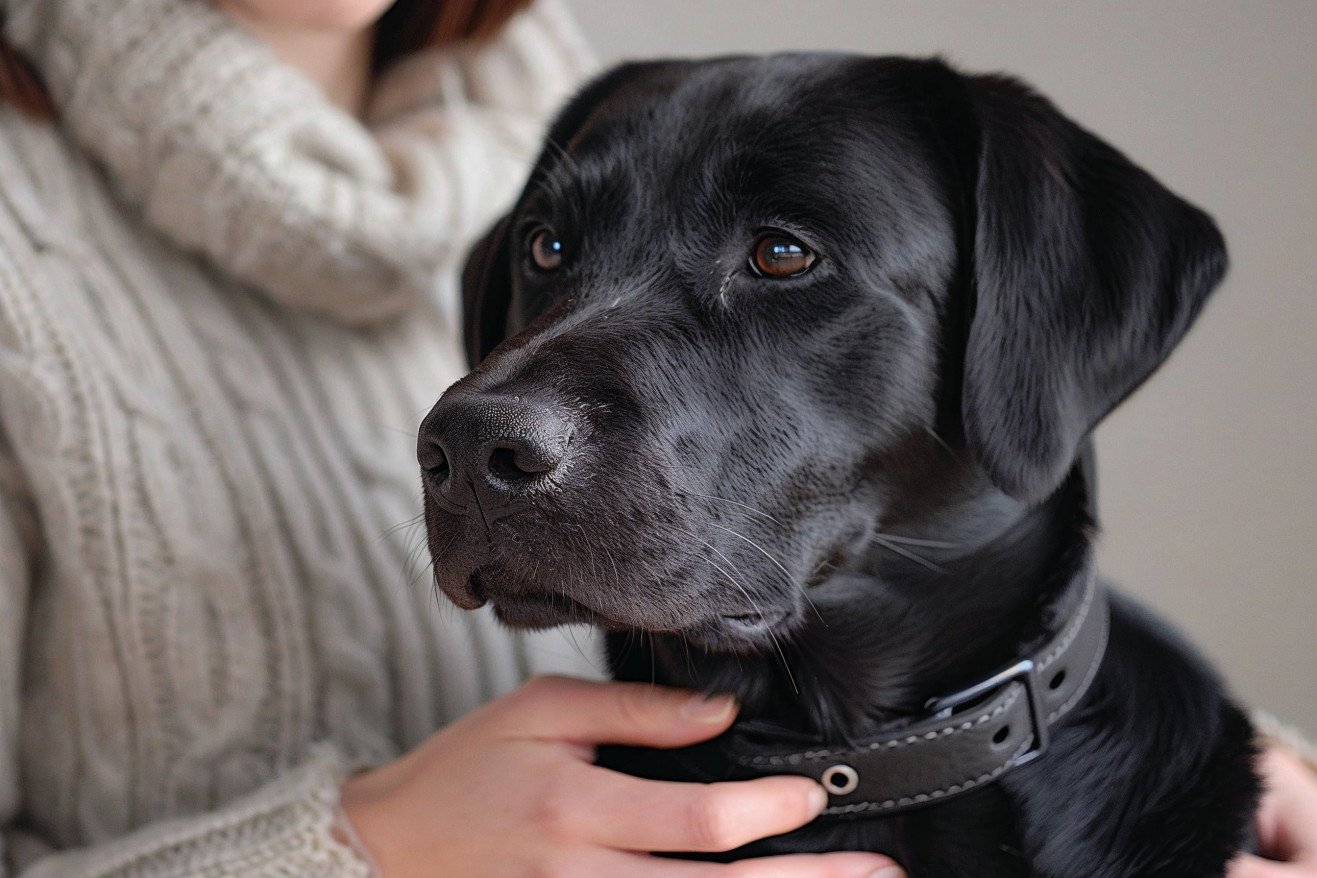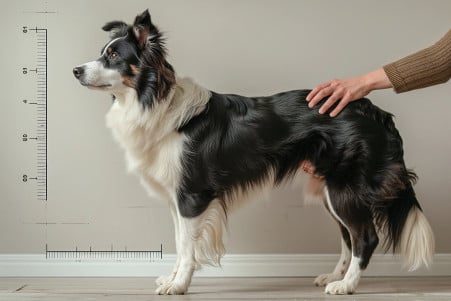How Tight Should a Dog Collar Be? Proper Fit for Safety & Comfort
12 April 2024 • Updated 11 April 2024

Getting the right size and fit for your dog's collar is important for their safety and comfort, but what does that mean in terms of tightness? A dog collar should be tight enough to prevent it from slipping over the dog's head, but loose enough that you can fit two fingers between the collar and the dog's neck. This ensures that the dog can breathe properly while also ensuring that they can't get out of the collar. Keep in mind that you may need to adjust the fit as puppies grow and adult dogs' weights change.
In this article, we'll explore expert advice and the latest research on how to size a dog collar, including information from veterinarians, data from companies that make pet products, and research on dog behavior and safety. By the end, you'll know how a properly sized collar can help keep your dog safe, healthy, and happy, while also avoiding potential problems like choking and matting.
How tight should a dog collar be?
How to Measure for the Right Collar Size
The first step to getting the right size collar is to make sure you're measuring your dog's neck correctly. According to Tactipup, the easiest way to do this is with a soft tape measure or a piece of string. Measure around the middle of your dog's neck, a few inches down from their head, and make sure the tape is snug. You should be able to fit two fingers between the tape and your dog's neck.
If you're buying a collar with an adjustable quick-release buckle, GoTags says that the size of your dog's neck must fall within the adjustable range of the collar. If you're buying a collar with a metal buckle, Chasing Winter says to round your dog's neck size down to the nearest even number.
After you've measured your dog's neck, you can then use sizing charts from reputable manufacturers like PetSmart to match your dog's measurements to the collar's measurements. This will help you make sure the collar is snug enough to keep your dog from slipping out of it but not so tight that it's uncomfortable.
Taking the time to measure your dog's neck and find the right size will help you make sure your dog is safe and comfortable. Once you've found the right size, you can move on to introducing your dog to their new collar.
Introducing a New Collar: How to Make the Transition Easier
You can help your dog get used to a new collar by introducing it slowly, says WikiHow. First, let your dog sniff and check out the new collar while giving them treats and praise. This will help them form a positive association, as Battersea Dogs & Cats Home explains in their article on training your dog to wear a collar, lead, and harness.
After that, you can work on putting the collar on your dog's neck. However, don't buckle it right away. Instead, as PetHelpful explains, this is a form of desensitization, which is more effective than trying to force the collar on your dog, which can lead to a traumatic experience. Once your dog is comfortable with the collar on their neck, buckle it to the appropriate setting, making sure it's not too tight or too loose based on the "two-finger rule" from Hill's Pet.
After that, work on increasing the amount of time your dog wears the collar, and make sure to reward them with play and affection. This is the counterconditioning method that Battersea Dogs & Cats Home describes in their article on training your dog to wear a collar, lead, and harness that will help your dog go from feeling anxious to feeling safe. With time and positive experiences, you can help your dog feel comfortable and happy in their new collar.
How to Know When to Replace Your Dog's Collar
It's important to regularly check your dog's collar to make sure that it's still safe and comfortable for them to wear. According to Oscar & Hooch, signs that it's time to replace your dog's collar include wear and tear such as fraying, bite marks, or a buckle that's no longer as secure. If the collar no longer fits your dog because they've grown or lost weight, it's time to get a new one.
Gorilla Dog Beds also notes that you should replace your dog's collar if it's causing skin irritation, allergic reactions, or smells bad even after you've washed it. In addition, if the information on the ID tags is no longer legible, it's time to replace the collar.
In general, Canini Shop recommends replacing your dog's collar every 6-12 months based on the amount of use and wear it gets. By regularly checking your dog's collar and replacing it when necessary, you can make sure that your dog is comfortable and safe and that they always have the proper identification.
How to Choose the Right Collar for Your Dog
The type of collar you choose will depend on your dog’s needs, as well as your own. Some collars are designed for everyday wear, while others are meant for specific training purposes. For example, according to Wild One, flat collars with quick-release buckles are a popular choice for everyday wear, as they can be easily removed.
On the other hand, Auburn explains that martingale or limited-slip collars are often used for training, as they can help with leash training and prevent dogs from escaping. These collars tighten when the dog pulls and loosen when the dog stops pulling, which makes them more secure than a flat collar.
In addition to everyday and training collars, there are also collars that are designed for specific purposes, such as flea/tick collars and training collars that use vibrations. As dogIDs explains, these types of collars may have specific sizing guidelines that are set by the manufacturer, so it’s important to follow them to ensure that the collar is effective and safe.
When choosing a collar for your dog, Auburn suggests taking your dog’s size, breed, activity level, and any behavioral or medical issues into account. By doing so, you can ensure that you choose a collar that will help your dog feel comfortable, safe, and secure.
Conclusion: How to Make Sure Your Dog's Collar Fits
Making sure your dog's collar fits properly is important for your dog's safety and your peace of mind. Use the 'two-finger rule' to gauge the fit of your dog's collar, and make sure to check the fit regularly as your dog grows or gains or loses weight.
When you're introducing a new collar, do so slowly and with positive reinforcement to make sure your dog has a positive association with the collar. Make sure to replace collars if they become worn, cause skin irritation, or no longer fit properly.
Also, make sure to choose the right type of collar for your dog and make sure to follow any specific fitting instructions that come with the collar. By making sure your dog's collar fits properly, you can make sure that your dog is safe and comfortable.


